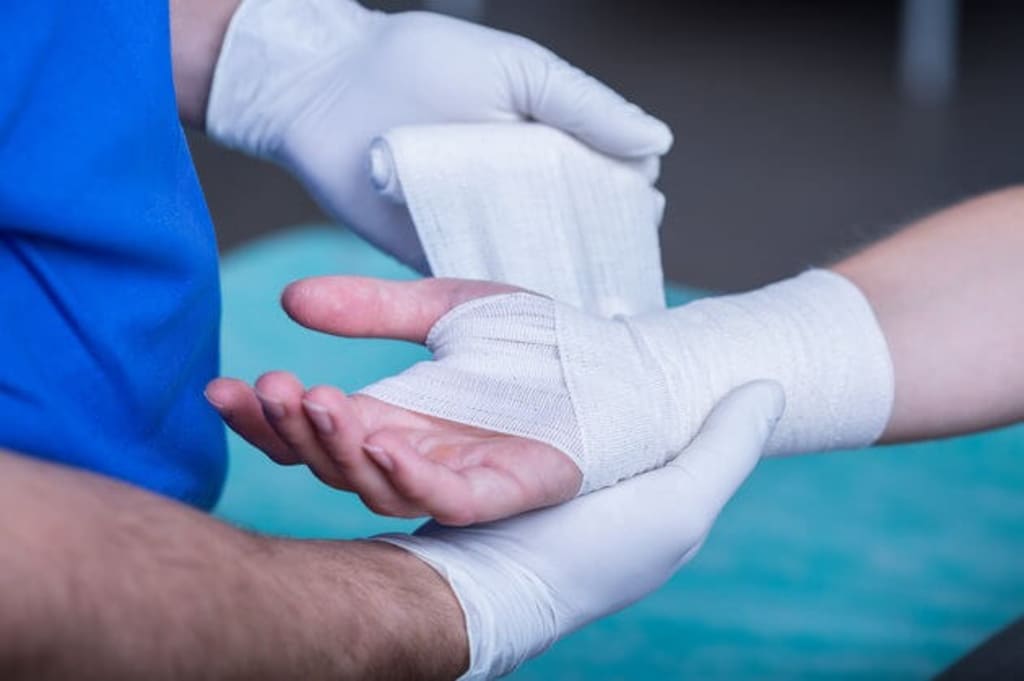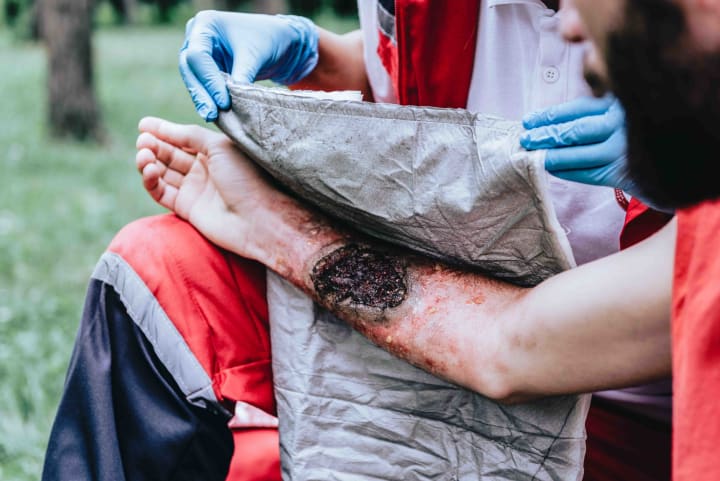
Disclaimer: Please consult with your medical provider before following any advice Dr. Google gives to you. Dr. Google is not a trained medical professional, even though it thinks it is. The photos used in this article may be disturbing to those who can’t handle grotesque images.
A burn is an injury to the skin, and/or tissue caused by heat or radiation. Nearly 450,000 people suffer a burn each year, while 3,500 people will die from it. Burns is one of the most common types of injury in the world. It is reported that 73% of all hospitalizations are burn-related. It is the fifth most common non-fatal injury to children as well. According to the American Burn Association, depending on the size of the burn, it will cost you $780,000 to 1.6 million dollars to treat it in the hospital. They are categorized into four main stages based on how deep they go called “Degrees”. Here are some tips to treat each stage of burn at home, if possible.
First-Degree

A first-degree, or superficial, burn is when you just damage the outer (epidermis) layer of skin. The burn site appears red and irritated, but there are no blisters. The most common types of first-degree burns are scalding burns and sunburn. Most often they can heal at home in their own time, so a trip to the hospital will be unnecessary. If you have one, don’t bandage it unless it is bleeding. Instead, run it under a cool tap for a few minutes. Apply a thin layer of aloe vera gel to keep the skin moisturized while it is healing. This will also help increase your healing time. If the pain is unbearable, try an over-the-counter pain reliever like Tylenol or Advil.
Second-Degree

Second-degree burns are the most common type of burn. They are known to cause blistering, skin discoloration, and swelling. The damaged skin layers of this type of burn often peel away from the site. There are a few places where you can get this type of burn, but the primary sources are direct exposure to flames, heat, chemicals, and electricity for a brief period. Second-degree burns that are less than three inches in diameter can be treated at home. If bigger, you should seek proper medical care at the hospital. To treat at home, run it under a cool tap for five minutes, and gently pat it dry. When finished, cover the wound with non-stick gauze. Change it daily until the blisters are gone.
Third-Degree

A third-degree burn has destroyed the first three layers of your skin. Though it may not hurt, the site will appear charred-black, dry, and leathery. They are often caused by direct prolonged exposure to flames, heat, chemicals, radiation, boiling water, and intense cold sources like dry ice or liquid nitrogen. This type of burn requires immediate medical attention. While you are waiting for medical help, you should avoid cleaning the site as this will help the ER get you out much quicker. The ER staff will often provide you with care instructions after they patch you up, so you don’t get an infection in the burn. Most often they will prescribe you Silvadene cream, which should be applied like aloe vera gel.
Fourth-Degree

This is the most severe and deepest burn you can get. This type affects all the skin layers, muscles, tendons, and bones at the site. Fourth-degree burns are life-threatening and can lead to many complications. There is no feeling left in the area since the nerve endings have been destroyed. The burn will look completely charred with bone exposure. There is no way to treat a fourth-degree burn at home since this stage requires surgical intervention. When you arrive at the ER, you will be transferred to the burn unit for more precise care. A common treatment for this type of burn is called skin graft surgery. This is where they take healthy skin from one part of the body and place it over the burn to encourage healing. In a worst-case scenario, the area could be amputated to prevent further damage.
What Not To Do

Regardless of the type of burn you have, there been a few commonly known myths you should never do. Do not apply ice or an ice pack directly to the burn itself, as this will just make it bigger and deeper. When using an ice pack for any reason, you should cover it with a paper towel, napkin, or anything that puts a barrier between the ice and your skin. Applying butter or food of any kind to the burn will only make it harder for the ER to clean the wound out, leading to infection. Do not pull clothing off the burn site. Instead, cut as much fabric away from it as possible. Pulling it off will just remove more skin layers, and could break any blisters that formed. As hard as it might be, DON’T POP the blisters, as this can lead to infection.
About the Creator
M.L. Lewis
Welcome to my little slice of pie. This blog will primarily focus on prepping and homesteading skills with a sprinkle of fiction every now and then.






Comments
There are no comments for this story
Be the first to respond and start the conversation.